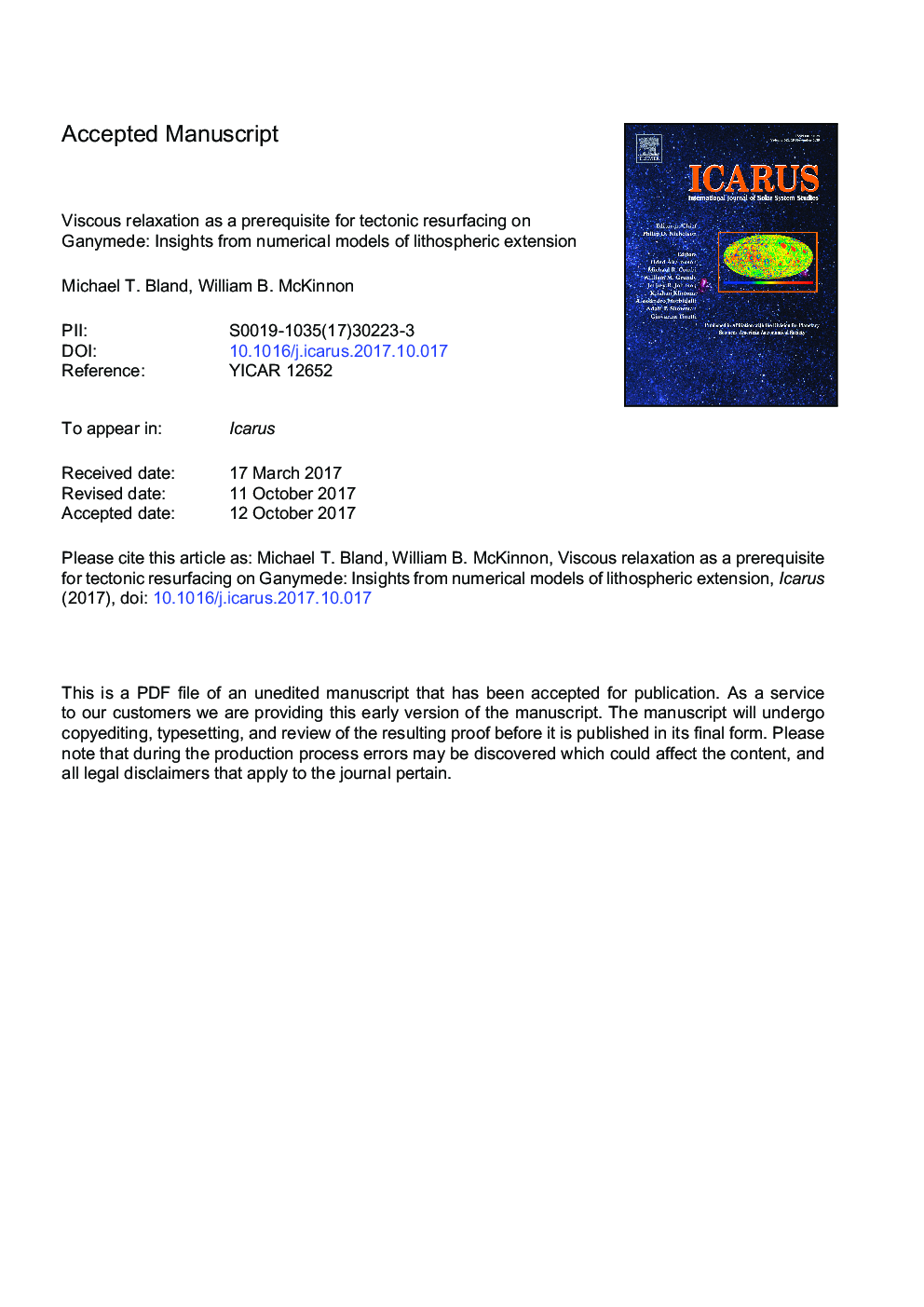| کد مقاله | کد نشریه | سال انتشار | مقاله انگلیسی | نسخه تمام متن |
|---|---|---|---|---|
| 8134324 | 1523485 | 2018 | 67 صفحه PDF | دانلود رایگان |
عنوان انگلیسی مقاله ISI
Viscous relaxation as a prerequisite for tectonic resurfacing on Ganymede: Insights from numerical models of lithospheric extension
دانلود مقاله + سفارش ترجمه
دانلود مقاله ISI انگلیسی
رایگان برای ایرانیان
موضوعات مرتبط
مهندسی و علوم پایه
علوم زمین و سیارات
علوم فضا و نجوم
پیش نمایش صفحه اول مقاله

چکیده انگلیسی
Ganymede's bright terrain formed during a near-global resurfacing event (or events) that produced both heavily tectonized and relatively smooth terrains. The mechanism(s) by which resurfacing occurred on Ganymede (e.g., cryovolcanic or tectonic), and the relationship between the older, dark and the younger, bright terrain are fundamental to understanding the geological evolution of the satellite. Using a two-dimensional numerical model of lithospheric extension that has previously been used to successfully simulate surface deformation consistent with grooved terrain morphologies, we investigate whether large-amplitude preexisting topography can be resurfaced (erased) by extension (i.e., tectonic resurfacing). Using synthetically produced initial topography, we show that when the total relief of the initial topography is larger than 25-50Â m, periodic groove-like structures fail to form. Instead, extension is localized in a few individual, isolated troughs. These results pose a challenge to the tectonic resurfacing hypothesis. We further investigate the effects of preexisting topography by performing suites of simulations initialized with topography derived from digital terrain models of Ganymede's surface. These include dark terrain, fresh (relatively deep) impact craters, smooth bright terrain, and a viscously relaxed impact crater. The simulations using dark terrain and fresh impact craters are consistent with our simulations using synthetic topography: periodic groove-like deformation fails to form. In contrast, when simulations were initialized with bright smooth terrain topography, groove-like deformation results from a wide variety of heat flow and surface temperature conditions. Similarly, when a viscously relaxed impact crater was used, groove-like structures were able to form during extension. These results suggest that tectonic resurfacing may require that the amplitude of the initial topography be reduced before extension begins. We emphasize that viscous relaxation may be the key to enabling tectonic resurfacing, as the heat fluxes associated with groove terrain formation are also capable of reducing crater topography through viscous relaxation. For long-wavelength topography (large craters) viscous relaxation is unavoidable. We propose that the resurfacing of Ganymede occurred through a combination of viscous relaxation, tectonic resurfacing, cryovolcanism and, at least in a few cases, band formation. Variations in heat flow and strain magnitudes across Ganymede likely produced the complex variety of terrain types currently observed.
ناشر
Database: Elsevier - ScienceDirect (ساینس دایرکت)
Journal: Icarus - Volume 306, 15 May 2018, Pages 285-305
Journal: Icarus - Volume 306, 15 May 2018, Pages 285-305
نویسندگان
Michael T. Bland, William B. McKinnon,